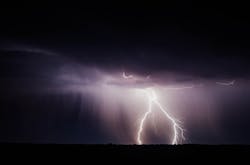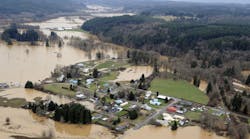Storm Dennis is the second-strongest nontropical storm on record in the North Atlantic Ocean.
The storm has caused widespread flooding across parts of the United Kingdom as well as winds exceeding hurricane force, reported the Washington Post.
The storm is producing waves up to 80 feet tall west of the U.K., dumping more than five inches of rain in South Wales. The flooding has caused numerous evacuations and cut off some communities.
The U.K. Met Office issued its first “red” warning for heavy rainfall since 2015, which is its highest warning category, reported the Washington Post. U.K. Environment Agency issued 594 flood warnings in a single day, according to John Curtin, executive director of flood and coastal risk management at the Environment Agency.
This storm came one week after another severe bomb cyclone, Storm Ciara. As a result of these conditions, many rivers, creeks and streams overflowed their banks and triggered landslides.
The storm is being blamed for at least two deaths after two bodies were pulled from rough seas in separate searches along England’s southeastern coast, according to the Washington Post. Storm Dennis produced wind comparable to a Category 1 hurricane as well. At its peak, the storm produced individual waves at least 112 feet tall.
Dennis resulted from the merger of two unusually intense bomb cyclones, which recorded a minimum central air pressure of 920 millibars. The storm maintained an intensity of 930 millibars, which is a strength that few nontropical storms ever reach, let alone maintain, According to Christopher Burt, a weather historian at Weather Underground, the storm ranks as the second-strongest storm on record for this region.


